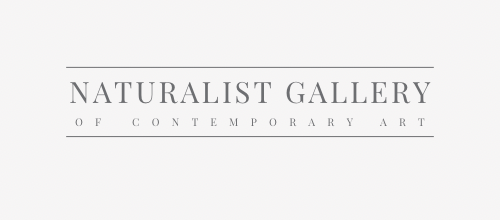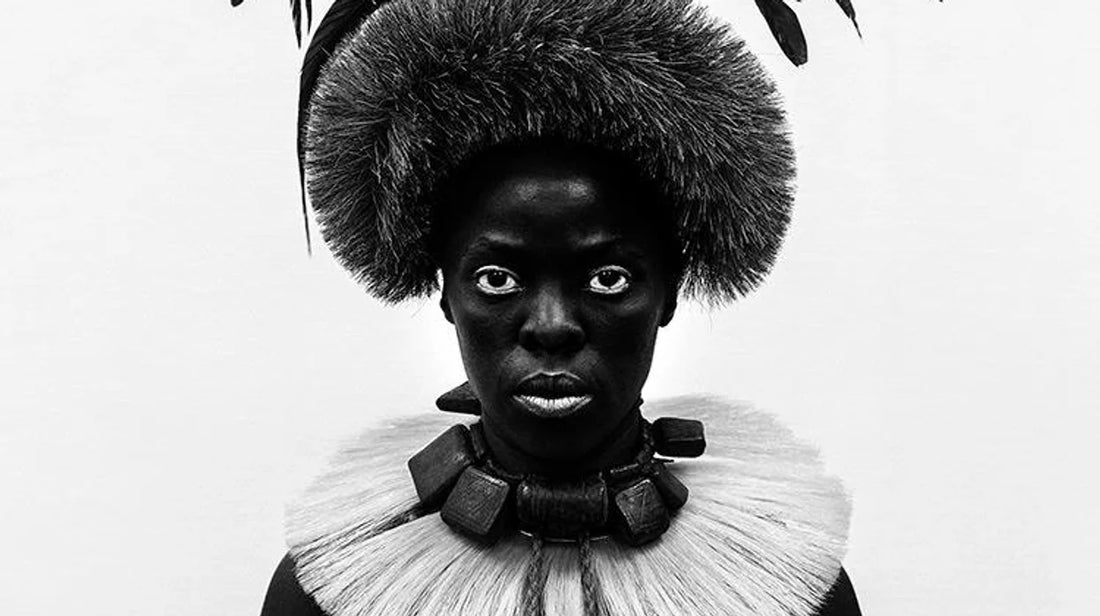Featured image: Zanele Muholi
In recent years, contemporary art has emerged as a powerful space for dialogue on gender, identity, and intersectionality.
Contemporary artists challenge traditional gender norms by exploring fluid identities and intersectionality through diverse media. They address race, class, and sexuality, reshaping inclusivity in art while digital platforms expand the conversation globally.
Artists across the globe are using their work to challenge and redefine traditional norms, reflecting the complexities of identity in today’s diverse world. Through a lens of inclusivity, intersectionality, and self-expression, these artists are transforming the way we think about gender and human experience.
Explore our curated selection of contemporary artists from around the globe.
Naturalist Gallery offers artist representation internationally. Apply your art.
The Dinner Party (1979) Judy Chicago
I. Introduction
As contemporary society continues to engage in critical discussions about gender and identity, art has become one of the most visible and impactful platforms for these conversations. Historically, art reflected a binary, often rigid understanding of gender roles and expectations. However, in the 21st century, many artists have embraced inclusivity, depicting gender not as a fixed attribute but as a fluid, intersectional experience shaped by race, culture, sexuality, and personal history.
This shift in the art world represents a significant cultural evolution, where artists are no longer confined to traditional portrayals of identity. Instead, they explore the spectrum of gender and its intersections with other aspects of life, offering new narratives that reflect the complex ways in which people define themselves. These contemporary works invite viewers to reconsider societal norms and embrace a more expansive, nuanced understanding of human identity.
II. Historical Perspective: Art and Gender Norms
The male gaze: In the first version of Susanna and the Elders (1550–1560) Tintoretto shows Susanna directly looking at the spectator gazing at the painting of which she is the subject; aware of being looked at.
Throughout much of art history, gender representation in art adhered to strict societal norms, often reflecting the patriarchal values of the time. Classical works typically depicted women in passive, ornamental roles, while men were shown as powerful and authoritative figures. In Renaissance art, for instance, women were often the subject of the "male gaze" — portrayed as objects of beauty or virtue, rarely as agents of their own stories. These depictions reinforced the traditional gender roles prevalent in society at the time.
By the 20th century, this began to change. The feminist movement of the 1960s and 1970s played a pivotal role in challenging the patriarchal structures in art, giving rise to new conversations about the representation of gender. Artists like Judy Chicago, known for The Dinner Party, redefined gender norms by celebrating women’s contributions to history and art. Feminist art opened the door for further explorations of identity, setting the stage for future artists to challenge gender binaries.
Frida Kahlo, for example, offered deeply personal explorations of her own identity and fluidity through self-portraits that defied traditional depictions of femininity. Her work blended masculinity and femininity, questioning rigid gender constructs and embodying a form of self-expression that resonated with her experience of physical and emotional pain.
III. Contemporary Artists Redefining Gender and Identity
Wu Tsang, contemplating her own works in the studio. Photography by Tosh Basco for Art Basel.
Today, many artists use their work as a platform for addressing gender fluidity and non-binary identities, expanding the conversation about what it means to exist outside of conventional gender roles. Trans and non-binary artists, such as Wu Tsang and Juliana Huxtable, have gained prominence for their boundary-pushing work that reflects their experiences of identity and visibility in the modern world.
Wu Tsang, a filmmaker and visual artist, explores the intersections of gender, race, and identity in her work. In films like Wildness, Tsang documents the lives of transgender and queer people of color, creating a space for marginalized voices in the art world. Tsang’s immersive installations challenge the audience to confront societal boundaries around gender and question binary thinking.
JULIANA HUXTABLE “ARI 2” 2019. INKJET PRINT. 45 X 30 IN. COURTESY OF THE ARTIST AND REENA SPAULINGS FINE ART NY/LA
Similarly, Juliana Huxtable, a visual artist and performer, uses photography, performance, and digital art to express her experience as a trans woman of color. Her work addresses the intersections of race, gender, and sexuality, portraying herself in different avatars that challenge traditional representations of femininity. By placing herself at the center of her art, Huxtable actively critiques society’s limited understanding of gender while offering alternative possibilities for identity.
Another artist worth noting is Zanele Muholi, a South African photographer and visual activist whose work documents the lives of Black LGBTQ+ communities. Through powerful, intimate portraits, Muholi challenges the invisibility and marginalization of queer identities in South Africa and beyond. Their ongoing series Faces and Phases showcases portraits of Black lesbians and trans individuals, reclaiming visibility for those historically excluded from both mainstream society and art.
IV. Intersectionality in Contemporary Art
Mickalene Thomas artwork
The concept of intersectionality, coined by scholar Kimberlé Crenshaw in 1989, has become essential in understanding identity, especially in contemporary art. Intersectionality describes the way in which multiple aspects of identity—such as race, gender, class, and sexuality—intersect and affect an individual's experience of discrimination and privilege. This framework is particularly important in art that addresses the complexities of identity beyond singular categories.
Artists such as Mickalene Thomas and Kehinde Wiley explore the intersection of gender, race, and class in their work. Thomas, for instance, reimagines art history by placing Black women at the center of her large-scale, vibrant paintings. Her work challenges the white, male-dominated history of art while celebrating the beauty and complexity of Black female identity. Thomas’s intersectional approach expands the conversation on gender by including race and sexuality as critical elements of identity.

Kehinde Wiley painting
Likewise, Kehinde Wiley’s portraits of African American men and women in poses that reference classical European art subvert historical power dynamics. By inserting marginalized identities into a visual tradition that has long excluded them, Wiley’s work brings to light the intersections of race, class, and gender, offering a critique of art history itself.
V. Inclusive Practices in Exhibitions and Galleries
As artists continue to redefine gender and identity, art institutions are also becoming more inclusive in their exhibitions and curation. Museums, galleries, and biennials are recognizing the importance of representing diverse voices, often curating exhibitions that prioritize intersectional identities.
One significant exhibition that highlights these themes is Trigger: Gender as a Tool and a Weapon (2017) at the New Museum in New York. This exhibition featured over 40 artists and explored how gender is constructed and contested in contemporary art. The show emphasized that gender is not fixed, but rather a fluid and evolving aspect of identity. The exhibition included works that ranged from performance to digital art, each challenging the conventional understanding of gender.
Art institutions are increasingly embracing diversity, but challenges remain in terms of representation. According to a 2019 study by Artnet, only 11% of acquisitions and gifts at 26 prominent U.S. museums were works by women, a statistic that underscores the continued gender imbalance in the art world. This highlights the ongoing need for more inclusive practices in exhibitions, acquisitions, and gallery representation to ensure that marginalized voices are adequately heard.
VI. The Impact of Technology and Digital Art on Gender and Identity
Cao Fei, Asia One, 2018, Video, 63’20”. Courtesy the artist, Vitamin Creative Space and Sprüth Magers
The rise of digital and virtual art forms has opened new avenues for artists to explore gender and identity. Online platforms like Instagram, TikTok, and even virtual reality (VR) are becoming important spaces for contemporary artists to reach broader audiences and engage in discussions about gender fluidity. Artists are using these platforms to bypass traditional gatekeepers of the art world and share their works with a global audience.
Virtual art, in particular, allows for the creation of new identities through digital avatars and online personas. Artists such as Cao Fei explore the fluidity of identity in the digital age, using avatars in virtual worlds to challenge physical boundaries and express shifting gender identities. By manipulating these virtual spaces, artists can explore the idea of identity as fluid, changeable, and influenced by technology.
The democratization of art through digital platforms has also empowered marginalized communities, allowing artists to share their experiences with larger audiences. Digital exhibitions and online galleries are increasingly important tools for showcasing works that address issues of gender, race, and identity.
VII. Contemporary Challenges and Criticism
Diana Davies, Untitled (Marsha P. Johnson Hands Out Flyers For Support of Gay Students at N.Y.U.), c. 1970, digital print, 11 x 14 in. © The New York Public Library/Art Resource, New York. Photo: Diana Davies
While many contemporary artists have embraced inclusivity and intersectionality, challenges remain. Some works that explore gender and identity face censorship or backlash from conservative audiences. For example, works by LGBTQ+ artists have been removed from exhibitions or targeted by censorship campaigns in certain countries where their themes are deemed controversial.
There are also ongoing debates about who has the authority to represent marginalized identities in art. Critics have raised concerns about the commodification of gender identity in the art market, questioning whether the art world’s growing interest in LGBTQ+ themes is genuinely about inclusivity or simply a marketing trend. This raises important questions about authenticity and appropriation in the representation of gender and identity.
In contemporary art, the exploration of gender and identity has become a vital and evolving conversation. Artists across the globe are pushing the boundaries of traditional gender norms, using their work to reflect a more inclusive, intersectional world. From trans and non-binary artists challenging the gender binary, to artists of color addressing the intersections of race, gender, and class, the art world is witnessing a profound transformation.
As the conversation continues to evolve, it is clear that art plays a pivotal role in shaping how society understands identity. In the future, we can expect that the expanding dialogue on gender, race, and intersectionality will continue to inspire new artistic movements, helping to foster greater inclusivity and understanding in both the art world and society at large.
Learn more About Naturalist Gallery of Contemporary Art.
You may also find the following articles helpful:
The 14 Essential Artists of Impressionism
Expressionism: 20 Iconic Paintings & Their Artists
Renaissance Art: Origins, Influences, and Key Figures
Classical Art Movement: Exploring the History, Artists, and Artworks
Figurative Art: Understanding, Collecting, and Appreciating the Style
Daily Routines of Famous Artists: Learn from the Masters
Top 12 Controversial Artworks That Changed Art History












